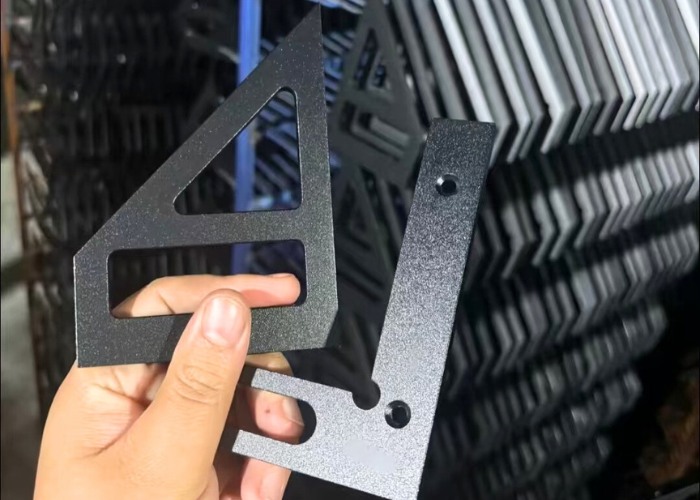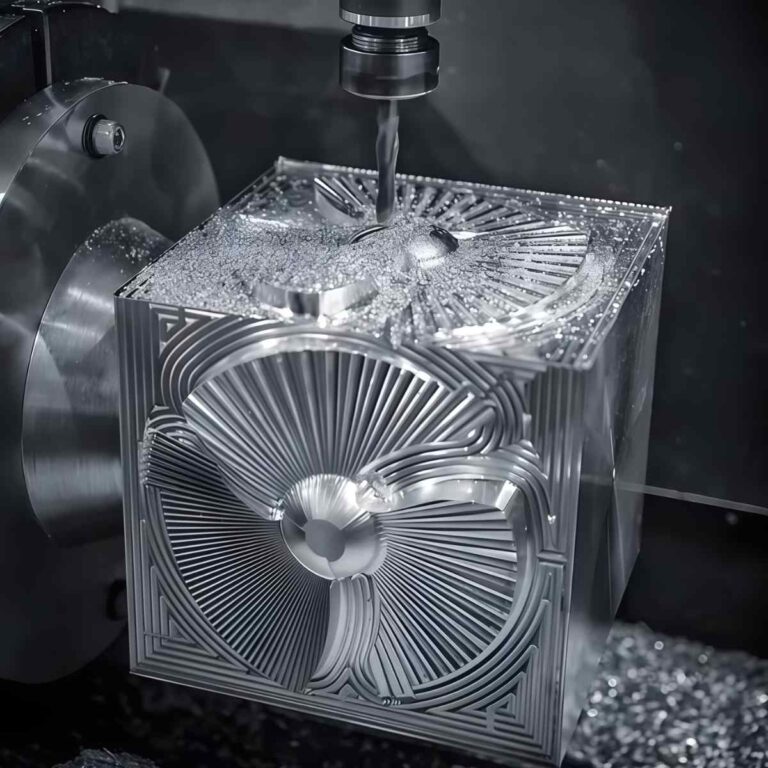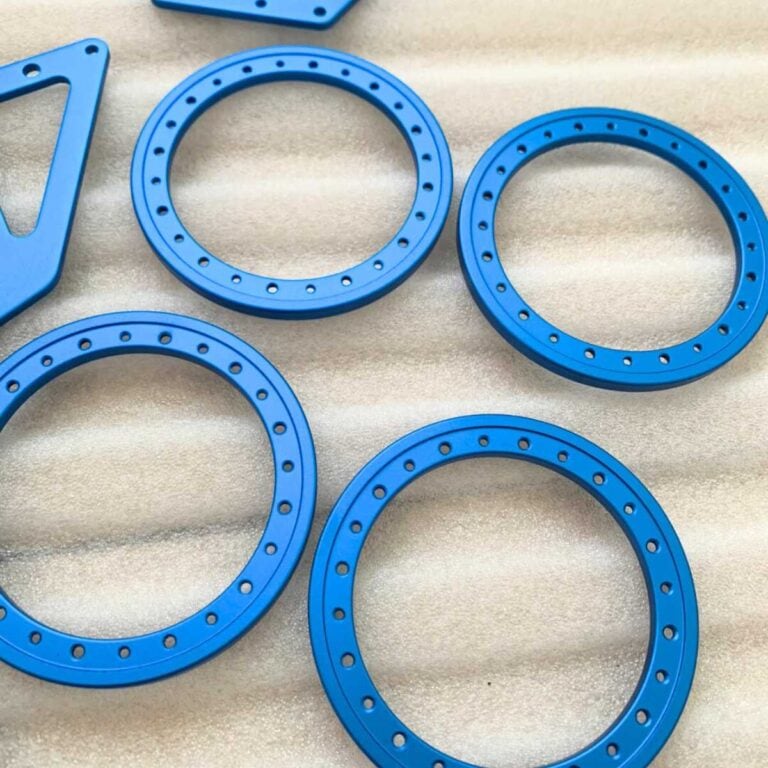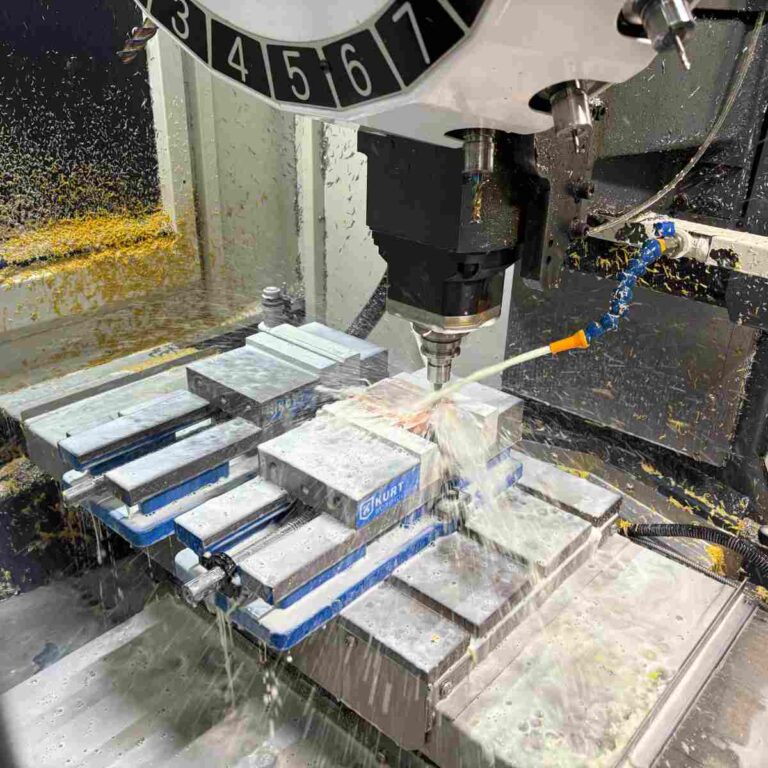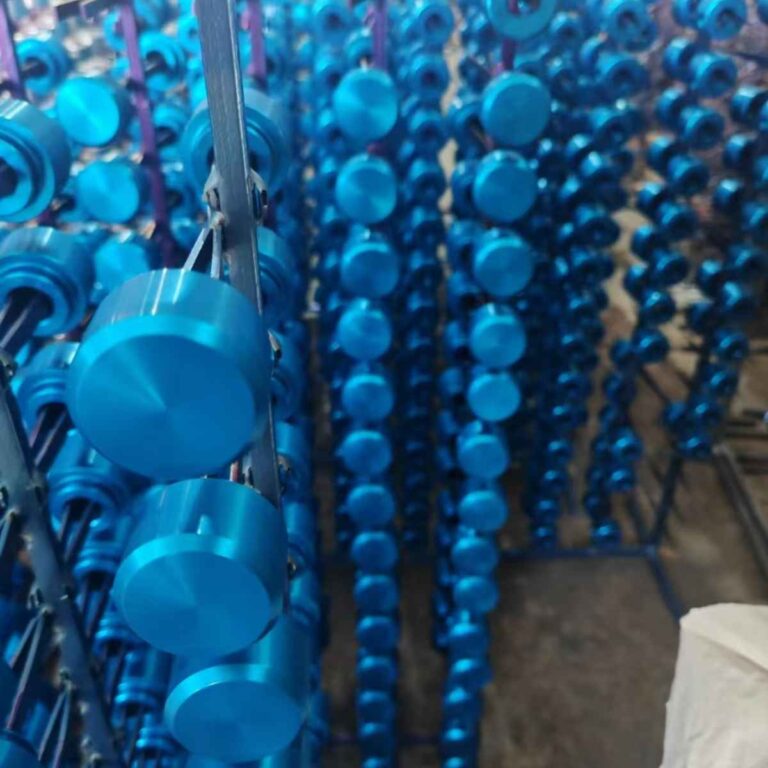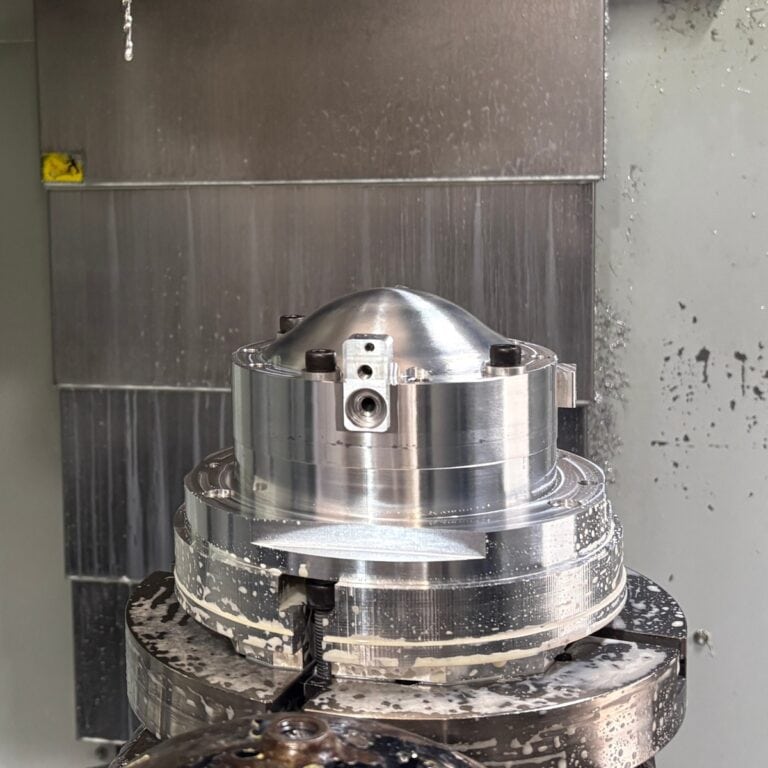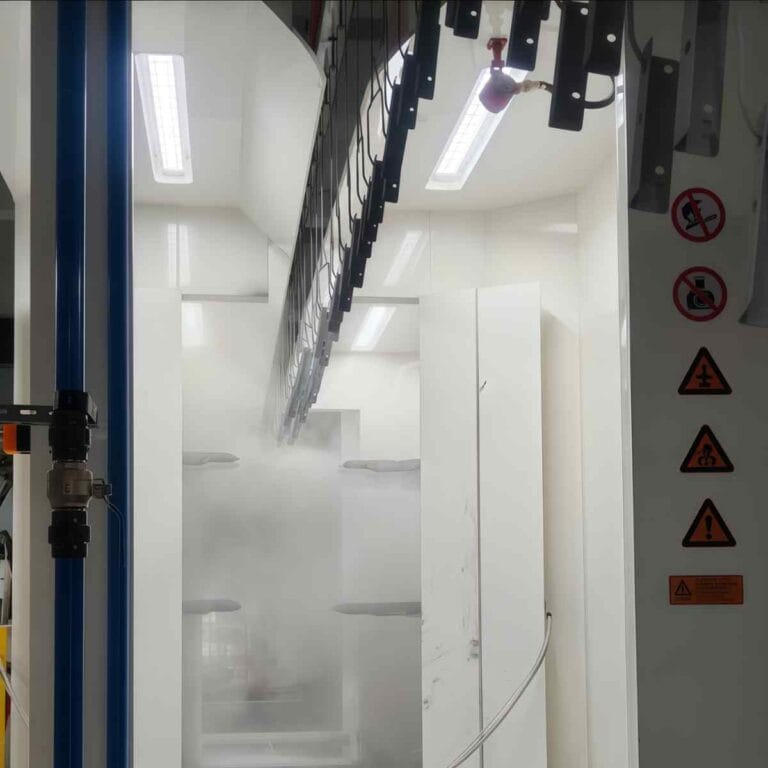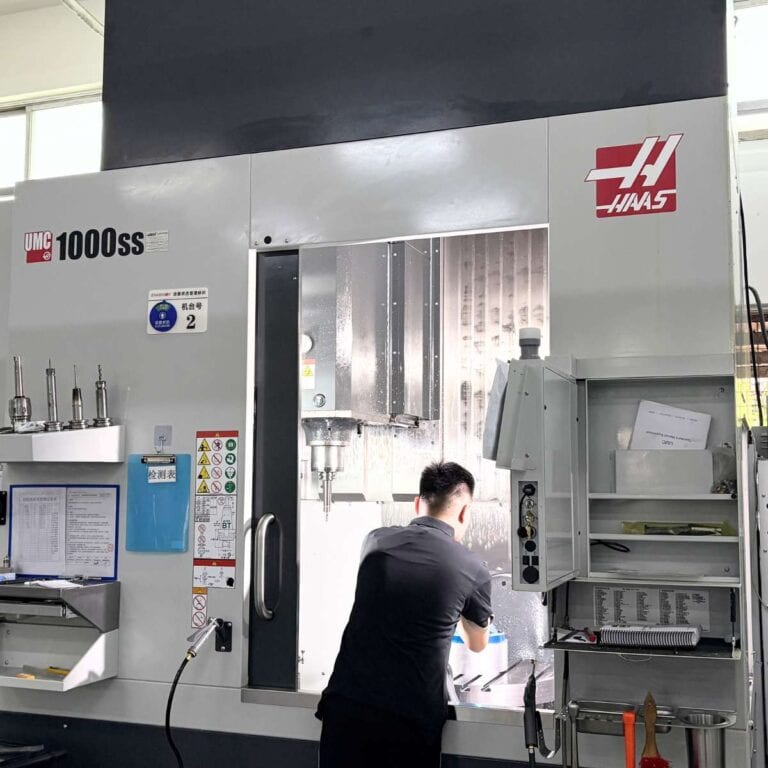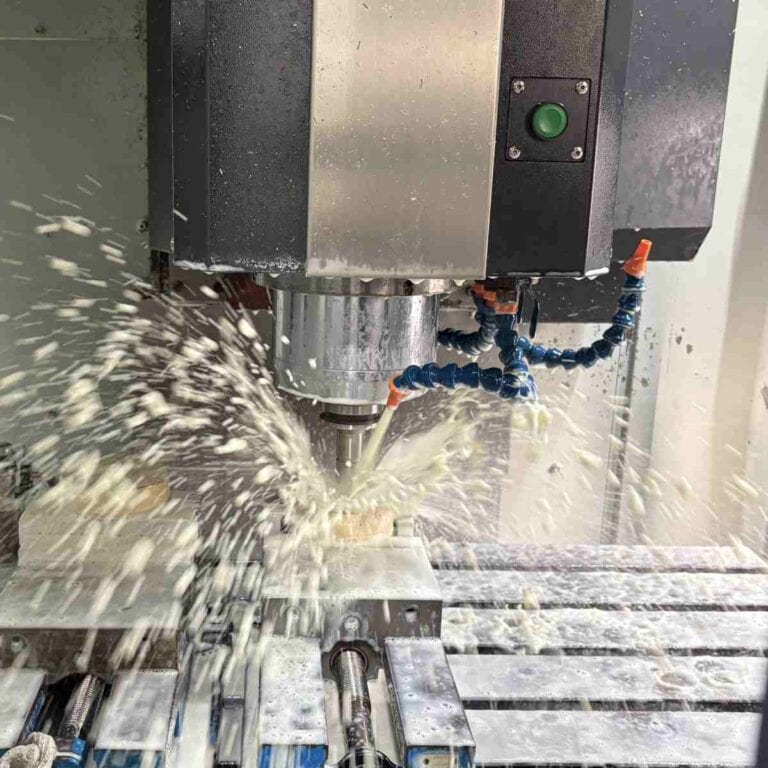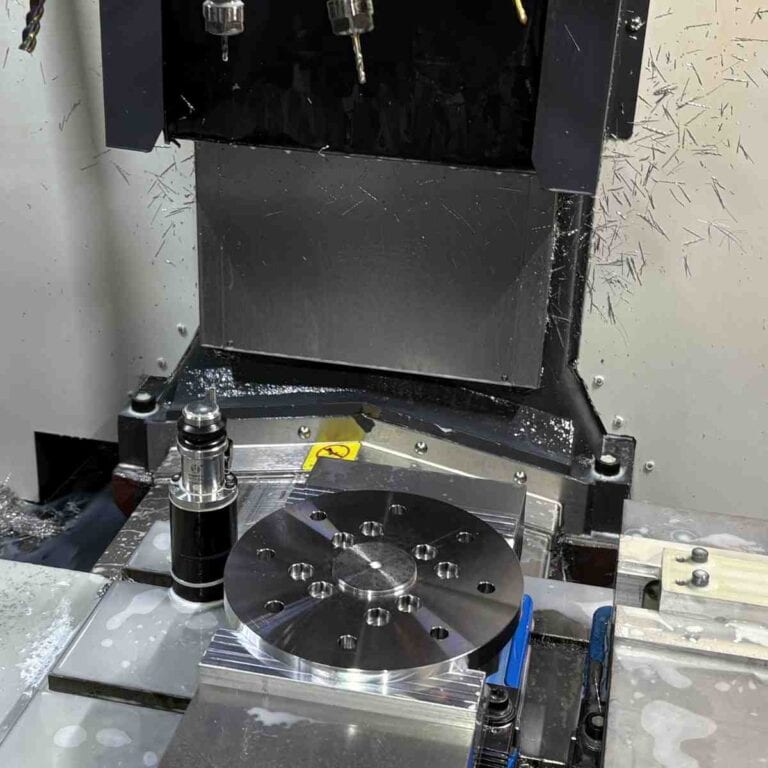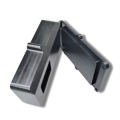Machining polypropylene (PP) presents several challenges due to its unique material properties. While its chemical resistance, flexibility, and low cost make it a popular choice in various applications, these same characteristics complicate CNC machining processes. Specifically, its low melting point (160-170°C for homopolymer) and tendency to deform under heat make precise machining more difficult. In this article, I will examine the factors that make polypropylene harder to process compared to other plastics, and offer solutions to optimize the machining process for better precision and efficiency.
What Is Polypropylene
Polypropylene (PP) is a widely used thermoplastic polymer known for its versatility, low density, and excellent chemical resistance. It is part of the polyolefin family and can be produced in two main forms: homopolymer and copolymer. Polypropylene is lightweight, durable, and highly resistant to acids, bases, and solvents, making it ideal for applications in the automotive, medical, packaging, and consumer goods industries.
It is also known for its high fatigue resistance, making it suitable for parts exposed to repetitive stress. Additionally, polypropylene is easy to machine, cost-effective, and offers good dimensional stability in various environments.
Basic Properties Of Polypropylene
Polypropylene, available as homopolymer and copolymer, is a lightweight thermoplastic known for chemical resistance and flexibility. It has a tensile strength of 30-50 MPa and elongation at break of 200%-600%. However, its low rigidity and melting point (160-170°C) make it prone to warping and distortion during machining, requiring careful tool selection and controlled cutting speeds for optimal results.
| Property | Description |
| Chemical Resistance | Resistant to acids, bases, and organic solvents, making it ideal for harsh chemical environments. |
| Tensile Strength | 30-50 MPa (megapascals), providing a balance of strength for various applications. |
| Elongation at Break | 200% – 600%, showcasing polypropylene’s flexibility before rupture. |
| Rigidity | Lower rigidity compared to other plastics like Delrin, making it more flexible but prone to warping. |
| Melting Point | 160-170°C (for homopolymer), impacting machining and handling at high temperatures. |
| Flexibility | Flexible, which is advantageous for creating living hinges but poses challenges during machining at high speeds. |
| Machining Challenges | Requires specialized tools to avoid degradation or wear due to chemical resistance. |
Typical Processing Methods For Polypropylene
Polypropylene (PP) is processed through CNC milling, turning, injection molding, extrusion, hot pressing, thermoforming, and welding. Each method has challenges due to PP’s heat deformation tendencies. CNC milling and turning offer precision, while molding and welding are suited for mass production and part joining. Optimizing these methods ensures efficient processing.
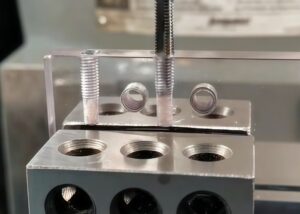
Polypropylene CNC Processing Method
CNC Milling
CNC milling is widely used for manufacturing precise polypropylene components, making it an ideal method for creating complex shapes with tight tolerances and fine surface finishes. The CNC milling process allows us to achieve high precision in polypropylene machining, with typical tolerances ranging from ±0.01mm to ±0.05mm, depending on the complexity of the part.
When machining polypropylene, it’s essential to carefully manage factors like cutting speeds, feeds, and cooling methods to prevent material deformation due to its low melting point (160-170°C for homopolymer). For instance, spindle speeds in the range of 12,000 to 20,000 RPM are commonly used to achieve optimal cutting performance.
Additionally, slower feed rates of 15-75 IPM help maintain part integrity by reducing heat buildup. By utilizing sharp carbide tools with appropriate rake angles, I can ensure clean cuts and minimize issues such as melting, warping, or burr formation.
Moreover, effective chip removal is critical, as polypropylene tends to form long, stringy chips during machining. To avoid re-cutting of chips and ensure smooth operations, using air blasts or vacuum systems is crucial. Proper clamping techniques are also essential, as polypropylene’s flexibility can lead to vibration and distortion during cutting. By optimizing these factors, CNC milling enables the efficient and precise production of polypropylene parts, even for highly detailed and intricate designs.
CNC Turning
CNC turning is an essential method for machining round or axial polypropylene parts, making it especially useful for applications involving pipes, cylindrical components, and other parts with rotational symmetry.
In CNC turning, the polypropylene workpiece is mounted securely on a lathe, where the cutting tool moves along the surface to create precise dimensions. For optimal results, it’s crucial to adjust the cutting speed and feed rates to balance material removal with heat generation. For polypropylene, spindle speeds between 1,000 and 3,000 RPM are typically used, depending on material thickness and part geometry. The feed rate is usually set between 0.01” and 0.03” per revolution, ensuring that the cutting tool moves steadily without overheating or causing part distortion.
Due to polypropylene’s relatively low melting point (160-170°C for homopolymer), managing heat during the CNC turning process is critical. It is imperative to ensure that proper cooling methods, such as air cooling or the use of water-soluble coolants, are used to reduce friction and prevent the material from softening or melting. Additionally, using sharp carbide tools with a high positive rake angle helps achieve a smooth surface finish, as blunt tools can cause excessive friction and poor quality cuts.
One of the challenges when turning polypropylene is its flexibility, especially for larger parts. To prevent material deformation and ensure dimensional accuracy, specialized clamping techniques are required, such as custom fixtures or soft jaws that can firmly clamp the component without inducing stress. This prevents issues like part wobbling or vibration during cutting, which can lead to inaccuracies in the final product.
By optimizing the parameters for spindle speed, feed rate, tool selection, and cooling, CNC turning allows me to produce high-precision polypropylene components with tight tolerances and a smooth surface finish, meeting the exact specifications required for demanding applications. Typical tolerances for CNC-turned polypropylene parts range from ±0.02mm to ±0.1mm, depending on the complexity and size of the component.
Comparison With Other Processing Methods
| Machining Method | Applicability | Machining Accuracy | Production Efficiency | Cost | Limitations |
| CNC Milling | Suitable for complex parts and fine surface finishes | High accuracy, smooth surface | Suitable for small batch production | High equipment and labor costs | Limited for thick materials, thermal expansion issues |
| CNC Turning | Suitable for round and axial parts | High accuracy, suitable for most standard sizes | Efficient, suitable for round part machining | High equipment costs | Not suitable for mass production |
| Injection Molding | Suitable for large-scale production | Lower precision | Ideal for mass production | High mold costs, low per-piece cost | High initial investment, lower precision |
| Laser Cutting | Suitable for flat cuts and complex shapes | High accuracy, smooth edges | Efficient, suitable for mass production | High equipment costs | Limited for thick materials |
| Hot Pressing | Suitable for large part production | Lower accuracy | Efficient, suitable for mass production | High equipment and mold costs | Limited for complex shapes |
The Challenges In Polypropylene Machining
Despite its widespread use, machining polypropylene presents several challenges. Its low rigidity, tendency to melt easily, and potential for warping require careful planning and precise control during the machining process. Let’s explore these challenges in more detail and discuss strategies to mitigate them.
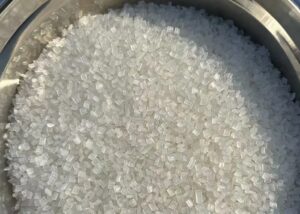
Thermal Expansion And Contraction Issues In Polypropylene
Polypropylene (PP) has a high coefficient of thermal expansion (CTE), leading to dimensional inaccuracies and warping during machining. Solutions include controlling the machining environment temperature, using mist or flood cooling, and moderating cutting speeds and feeds. Cooling the workpiece with compressed air or water-based coolants helps reduce thermal buildup. By optimizing machining parameters and controlling temperature, we can mitigate thermal expansion issues, ensuring accurate and high-quality polypropylene parts.
Common Solutions
Controlled Machining Environment: Maintain a consistent temperature in the machining area. Use climate-controlled rooms or cooling systems to minimize temperature fluctuations during production.
Tool Cooling: Use mist or flood cooling systems to dissipate heat during the machining process, reducing thermal buildup at the cutting zone and preventing material deformation.
Workpiece Cooling: Cool the polypropylene workpiece using compressed air or water-based coolants to reduce its temperature before and during machining.
Moderate Cutting Speeds and Feeds: Reduce cutting speeds and feed rates to minimize heat generation, which helps in maintaining dimensional stability. For instance, a spindle speed of 4,000 to 6,000 RPM with feed rates of 10-15 IPM (inches per minute) can help manage heat accumulation.
By optimizing the machining parameters and controlling the thermal environment, we can effectively mitigate thermal expansion issues, ensuring the production of high-quality polypropylene parts with accurate dimensions.
Difficulties In Polypropylene Machining
Machining polypropylene is challenging due to heat buildup, leading to melting and tool gumming. Managing speed, tool selection, and coolant is crucial. Its flexibility causes deformation, especially in thin parts, requiring secure clamping and sharp tools. Low rigidity also results in stress cracking and warping, which can be minimized with lighter cutting forces and precise fixtures. These steps ensure better part quality.
Heat Generation During Cutting
One of the key challenges I often encounter when machining polypropylene is the buildup of heat during the cutting process. Polypropylene has a relatively low melting point, typically ranging from 160°C to 170°C for homopolymer, which makes it more susceptible to deformation under high temperatures. Excessive heat generated during machining can cause the material to melt, which in turn can gum up the cutting tools and warp the part, leading to dimensional inaccuracies and poor surface finishes.
To prevent these issues, it’s essential to carefully manage cutting speed, tool selection, and the application of coolants. In my experience, maintaining lower spindle speeds—typically between 4,000 to 6,000 RPM—and using more frequent tool changes significantly helps in minimizing heat buildup. Additionally, using mist or flood cooling systems effectively cools the cutting zone, ensuring that the polypropylene stays below its melting point. By employing these strategies, better machining results were consistently achieved while minimizing material loss.
Low Rigidity And Flexibility Of Polypropylene
Polypropylene’s flexibility, while an advantageous property in many applications, can pose significant challenges during machining, especially when dealing with thin-walled or intricate parts. Its relatively low rigidity means that it can easily deform under cutting forces, leading to issues such as warping or dimensional inaccuracies. This is particularly evident when machining parts with complex geometries or when parts are not adequately secured.
In my experience, ensuring that the polypropylene workpiece is securely clamped is crucial to preventing any movement or vibration that could result in deformation. Specialized clamps are recommended to provide even clamping pressure, which helps maintain part integrity throughout the machining process. Additionally, the selection of the cutting tool plays a significant role in reducing deformation.Sharp tools with a large rake angle are recommended as they reduce cutting forces and minimize the risk of material deformation.
In my practice, I’ve found that using a cutting speed in the range of 4,000 to 6,000 RPM with a feed rate of 10-15 IPM (inches per minute) ensures optimal results, preventing unwanted flexing or bending of the polypropylene.
By paying close attention to these details, the precise dimensions and quality required for polypropylene parts can be achieved.
Stress Cracking And Warping During Machining
Stress cracking and warping are significant challenges in polypropylene machining due to its low rigidity and high flexibility. When machining polypropylene, the material’s tendency to deform under uneven clamping or excessive cutting forces can lead to issues such as cracks or warps in the final part. To alleviate these issues, focus on using lower cutting forces, specifically keeping spindle speeds around 3,500 to 5,000 RPM and feed rates between 8 and 12 IPM. These settings help reduce thermal buildup and lower the stress on the material, ensuring a smoother, more stable cut.
In addition, I always prioritize securing the polypropylene workpiece with precise fixtures to maintain uniform clamping pressure. Using custom fixtures that distribute the clamping force evenly is essential to prevent the part from shifting or vibrating during the machining process, which could otherwise lead to stress cracks or warping.
Attention to detail in both the cutting process and part clamping can significantly improve the quality and precision of finished polypropylene parts. By managing both the forces and securing the workpiece properly, polypropylene machining can be done effectively, ensuring minimal warping and cracking during the process.
Why Polypropylene Is More Difficult To Machine Than Other Plastics
Polypropylene is more difficult to machine than other plastics like ABS or acrylic due to its softness and thermal properties. Its high fatigue resistance makes it resistant to cracking but prone to thermal deformation. Additionally, its semi-crystalline molecular structure causes uneven material removal. To overcome these challenges, controlling cutting parameters, tool selection, and cooling methods is essential for consistent results.
Impact Of Polypropylene’s Toughness On Machining
Polypropylene’s toughness plays a significant role in its machinability, especially during polypropylene machining. Its resistance to cracking is a key benefit, but it also means the material is more challenging to machine, particularly when high forces are applied. The material’s high fatigue resistance allows it to endure repeated stresses, making it suitable for applications that require durability. However, this same toughness can lead to thermal deformation if not managed properly during polypropylene machining.
In my line of work, the key to overcoming this challenge is precise control of cutting parameters, such as feed rate and spindle speed, which helps prevent the material from softening or deforming. By carefully selecting the appropriate tooling, such as carbide or HSS tools with sharp cutting edges, and using proper coolant, I can maintain the dimensional accuracy of the machined polypropylene parts. Additionally, optimizing cutting speeds and cooling techniques ensures that the heat generated during machining doesn’t compromise the material’s integrity, resulting in a high-quality finished product.
Relationship Between Polypropylene’s Molecular Structure And Machining
Polypropylene’s semi-crystalline molecular structure is one of the primary challenges in polypropylene machining. Unlike amorphous plastics, which have a uniform structure, polypropylene exhibits both crystalline and amorphous phases. These phases can create uneven material removal during machining, making it more difficult to achieve consistent results. Long experience machining polypropylene has taught me that variations in material density can lead to inconsistent cutting forces, which can cause surface defects or dimensional errors.
To overcome this, proper tool selection is crucial. Tools with sharp cutting edges and high positive rake angles, like carbide inserts, can help improve material removal efficiency. Controlling cutting speeds and feed rates is also critical, typically, spindle speeds of 4,000 to 6,000 RPM should be used to machine polypropylene, with feed rates between 0.01 and 0.02 inches per revolution.
Cooling methods are also key to managing the semi-crystalline behavior of polypropylene. By using a mist or flood cooling system, you can ensure that the material temperature is controlled, preventing melting and minimizing deformation. This integrated approach allows for smooth and consistent machining of polypropylene, ensuring high-quality finished parts.
Techniques And Methods To Improve Polypropylene Machining
Optimizing polypropylene machining involves selecting durable carbide tools and adjusting feed rates and spindle speeds to prevent overheating. Tools with higher rake angles help improve surface finish and accuracy. Lower feed rates and higher spindle speeds work best for cutting polypropylene efficiently. Using water-based coolants helps reduce heat buildup and improve the finish, ensuring high-quality, precise parts.
Choosing The Right Cutting Tools And Tool Materials
Choosing the right cutting tools and tool materials is crucial for successful polypropylene machining. Carbide tools are often the best choice due to their excellent wear resistance, high durability, and ability to maintain a sharp cutting edge throughout the machining process. Carbide tools ensure that the cutting forces are properly distributed, preventing deformation and ensuring precise cuts.
For more intricate cuts, tools with higher rake angles, such as those designed specifically for plastics, are ideal. These tools reduce friction, which minimizes heat generation during polypropylene machining. Lower heat buildup leads to improved surface finishes and better dimensional accuracy, crucial for applications where tight tolerances are required. Additionally, selecting the right tool material can significantly extend tool life, reducing overall production costs.
Optimizing Feed Rates And Spindle Speeds
Optimizing feed rates and spindle speeds is essential for successful polypropylene machining. In polypropylene processing, achieving the right balance between these parameters is key to ensuring high-quality processing results and preventing problems such as overheating and deformation.Polypropylene, being a soft thermoplastic, requires careful attention to cutting speeds. For this material, a lower feed rate (usually 10-15 inches per minute (IPM)) and a higher spindle speed (around 4,000-6,000 RPM) work best. This combination allows the cutting tool to engage the material more efficiently, reducing the heat generated during the machining process. Excessive heat buildup can cause the polypropylene to soften, leading to dimensional inaccuracies and surface defects. By optimizing these parameters, I can ensure smoother cuts and maintain the material’s integrity throughout the process, while also improving overall machining efficiency.
Using Coolants To Minimize Heat Buildup
Using coolants effectively is a critical step in polypropylene machining, especially due to the material’s sensitivity to heat. During machining, the friction between the cutting tool and polypropylene generates significant heat, which can lead to warping, melting, or poor surface finishes if not managed properly. In my experience, water-based coolants are the most effective for polypropylene machining as they help dissipate heat quickly, keeping the material at a stable temperature. Typically, a coolant flow rate of approximately 1-2 liters per minute is used to achieve stable cooling. The use of coolants not only minimizes thermal damage but also enhances the overall surface finish by reducing friction during the cutting process.
In some cases, when working with thinner parts or delicate features, I opt for air cooling or mist systems. These systems blow air or a fine mist directly onto the cutting zone, effectively lowering the temperature without flooding the workpiece with coolant. Air cooling works well when machining at lower speeds or when fine finishes are needed. By optimizing coolant usage, you can maintain dimensional accuracy, increase tool life and reduce the likelihood of defects in polypropylene parts, ensuring high-quality, reliable results.
Common Solutions For Polypropylene Machining Problems
To optimize polypropylene machining, addressing issues like heat buildup, deformation, and surface finish is essential. Balancing heat with air cooling and adjusting feed rates prevent deformation. Advanced CNC systems ensure dimensional accuracy, while specialized tools like single-flute end mills reduce flexibility impacts. Adjusting setups to minimize vibrations also improves part quality, ensuring better results when machining polypropylene.
Balancing Heat And Cooling During Machining
Balancing heat and cooling during polypropylene machining is one of the most critical aspects of ensuring high-quality results. Polypropylene is prone to deformation due to its low melting point, so managing the heat generated during machining is essential. Using the right combination of cooling methods, such as air cooling or a mist system, and adjusting cutting speeds to optimize heat dissipation can be very effective.
For instance, I typically use a spindle speed of 6,000 RPM with feed rates between 15-20 inches per minute (IPM) to maintain an optimal temperature range and prevent material distortion. Effective cooling not only helps maintain dimensional accuracy but also extends tool life and improves the overall surface finish during polypropylene machining. This approach has consistently produced the best results, ensuring smooth and precise machined parts.
Precision Control And Minimizing Errors
Precision control is paramount in polypropylene machining to ensure that parts meet the required specifications and quality standards. Advanced CNC systems using integrated feedback loops have been shown to maintain consistency throughout the machining process. These systems allow real-time adjustments to cutting parameters, such as spindle speed, feed rates, and tool paths, ensuring that any deviation is corrected immediately.
For polypropylene machining, I often use CNC machines with tolerances of ±0.002″ to achieve the tight dimensional accuracy required for critical applications. Additionally, by optimizing the setup, including the proper fixtures and clamping devices, any errors associated with part movement or vibration are minimized, ensuring precision and reliability in the final product. This level of control consistently ensures that we produce high-quality, defect-free polypropylene parts that meet stringent industry standards.
Using Specialized Tools And Adjustments
Using specialized tools is critical for achieving high-quality results in polypropylene machining. Cutting tools like single-edge end mills are particularly effective when machining polypropylene because they clear chips more efficiently, reduce heat buildup, and prevent material from re-welding to the tool.These tools are also excellent at managing the flexibility of polypropylene, which can cause issues like warping or distortion under certain conditions.
I’ve found that tools with specific coatings, such as TiN (Titanium Nitride), also improve tool life and provide a better surface finish by reducing friction and heat generation.
In addition to tool selection, it is also important to emphasize the importance of adjusting machining settings to minimize vibration. By ensuring that the workpiece is securely fixtured and the cutting forces are evenly distributed, we can significantly reduce the likelihood of part distortion during polypropylene machining.
For example, a well-calibrated CNC machine with precise tool paths, combined with vibration damping systems, helps maintain dimensional stability, especially when working with thin-walled or complex parts. This meticulous approach results in parts with smoother finishes and tighter tolerances, which is essential for polypropylene components used in industries like medical, automotive, and packaging.
Applications And Industries Using Polypropylene
Polypropylene machining is used in industries such as automotive, medical, packaging, and consumer goods due to its chemical resistance, lightweight, and flexibility. It’s found in automotive parts like bumpers and dashboards, medical items like syringes and IV bags, packaging materials, and household goods. Additionally, polypropylene serves industries like electrical, textiles, and industrial equipment, thanks to its durability and impact strength.
| Industry | Application Examples | Key Properties Impacting Use |
| Automotive | Bumpers, dashboards, interior panels | Lightweight, chemical resistance, flexibility |
| Medical | Syringes, IV bags, medical trays | Chemical resistance, bio-compatibility, lightweight |
| Packaging | Containers, bottles, film | Durability, lightweight, resistance to wear |
| Consumer Goods | Furniture components, household items | Durability, resistance to wear, flexibility |
| Industrial Equipment | Machine housings, valves, tanks | Chemical resistance, impact resistance, durability |
| Electrical | Cable insulation, connectors, electrical enclosures | Insulation properties, flexibility, chemical resistance |
| Textiles and Fabrics | Nonwoven fabrics, carpets, upholstery | Lightweight, flexibility, durability, chemical resistance |
FAQs
What Are The Disadvantages Of Polypropylene?
Polypropylene, while versatile, does have its drawbacks. In my experience, its low rigidity can cause deformation under stress, particularly in thin-walled parts. Additionally, its poor UV resistance means it can degrade when exposed to sunlight over time. The material’s low melting point (160-170°C for homopolymer) also presents challenges during machining, leading to issues like warping or heat buildup. Despite these disadvantages, polypropylene remains a cost-effective material for many applications. With the right techniques and careful machining, these challenges can be managed effectively, ensuring high-quality results.
Why Is Polypropylene Used In Engineering?
Polypropylene is widely used in engineering due to its excellent chemical resistance, low density, and good fatigue resistance. With a tensile strength of 30-50 MPa and an elongation at break of 200-600%, it’s suitable for parts under repeated stress. Its low cost, ease of machining, and ability to withstand harsh environments make it ideal for applications in automotive, medical, and chemical processing industries. In many fabrication orders, I have found that its flexibility allows it to be used to create living hinges and complex shapes, making it a versatile choice for a variety of applications.
How Strong Is Polypropylene Plastic?
Polypropylene plastic has a tensile strength ranging from 30 to 50 MPa, which provides a good balance of strength and flexibility for various applications. It exhibits an elongation at break of 200-600%, allowing it to withstand repeated stress and strain without failing. While not as rigid as some other engineering plastics, its excellent chemical resistance and fatigue resistance make it suitable for demanding environments in industries such as automotive, medical, and packaging.
What Is A Heat Set Polypropylene Rug? How Is It Used?
A heat set polypropylene rug is made from polypropylene fibers that I heat-treat to set the fibers in place, which enhances their durability, texture, and resistance to wear. The process involves applying heat to the fibers, helping them retain their shape and resist deformation. These rugs are often used in high traffic areas due to their stain resistance, low moisture absorption, and ease of maintenance. Heat set polypropylene rugs are lightweight, cost-effective, and ideal for both residential and commercial applications.
What Is The Best Choice To Weld The Polypropylene Polymer?
The best choice for welding polypropylene (PP) is using hot air welding or extrusion welding methods. Hot air welding utilizes a stream of heated air to melt the edges of the polypropylene, allowing them to fuse together. For higher-strength joints, I prefer extrusion welding, where molten polypropylene is applied through a nozzle to join the parts. Both methods require precise temperature control to avoid degradation, with a recommended welding temperature range of 250-280°C to ensure optimal fusion without compromising the material’s integrity.
Conclusion
Polypropylene presents numerous advantages for machining, but it comes with its own set of challenges, such as warping, melting, and dimensional inaccuracies. To achieve optimal results, it’s crucial to understand the material’s properties and carefully apply the appropriate techniques. By selecting the right tools, controlling temperatures, and optimizing cutting speeds, you can produce high-quality polypropylene parts tailored to your specific applications. Have you faced any machining challenges with polypropylene? Share your experience, and let’s discuss how we can overcome them together for better results!

